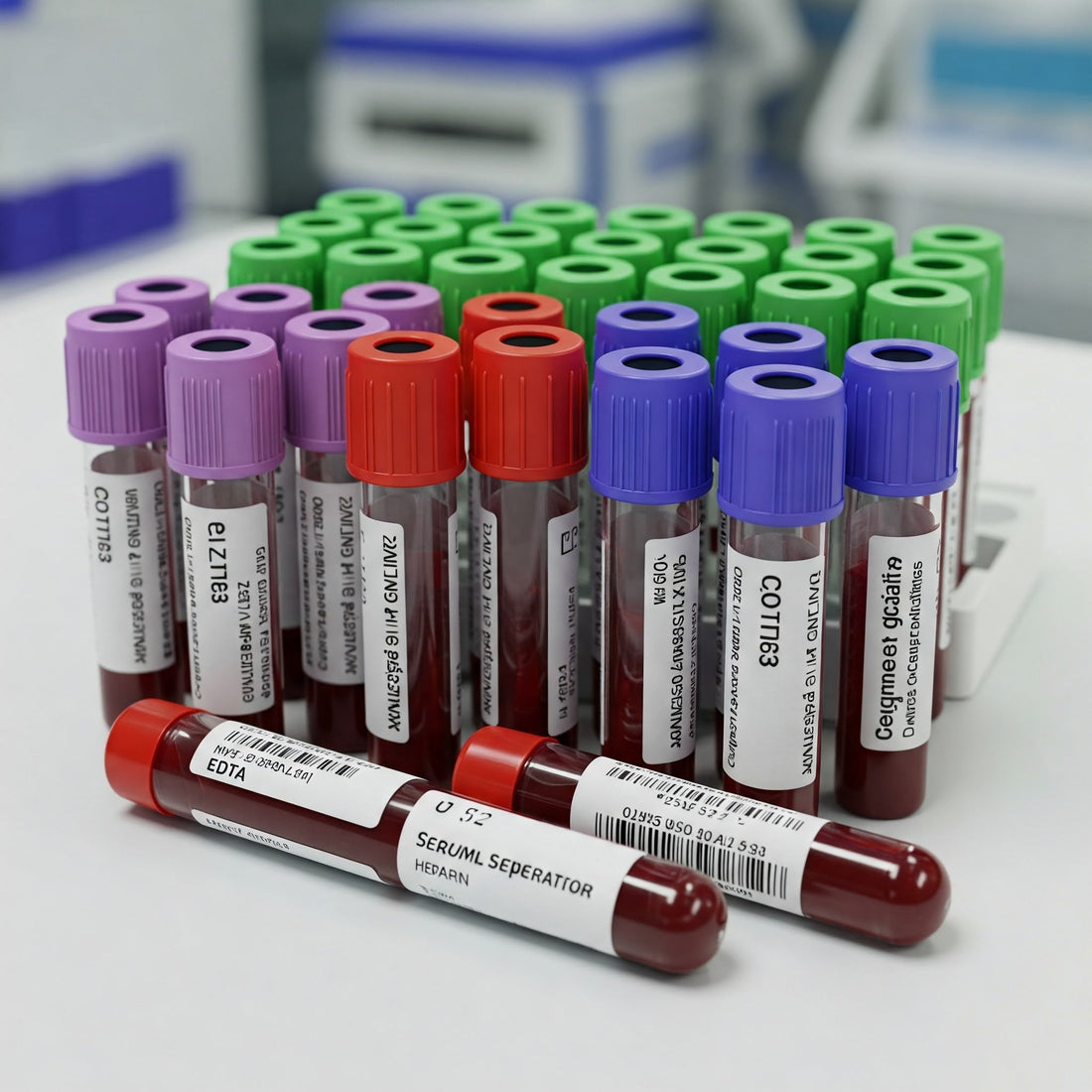
The Rainbow of Blood Tubes: A Guide to Anticoagulants in the Clinical Lab
Share
If you've ever had blood drawn, you've likely seen a collection of colorful tubes. These aren't just for show; each color corresponds to a specific additive, most often an anticoagulant, designed for particular laboratory tests. Understanding these tubes is crucial for accurate diagnostics. Let's delve into the common blood collection tubes and their uses, organized by color:
1. Yellow-Top Tubes (SPS or ACD):
-
SPS (Sodium Polyanethole Sulfonate):
- This tube is primarily used for blood cultures. SPS inhibits phagocytosis and complement activation, preventing the destruction of microorganisms.
- It's essential for detecting bacteria or fungi in the bloodstream.
-
ACD (Acid Citrate Dextrose):
- ACD solution acts as an anticoagulant by binding calcium.
- It's used for specialized tests like DNA testing, HLA phenotyping, and other genetic studies.
- Also used for blood bank studies.
2. Light Blue-Top Tubes (Sodium Citrate):
- These tubes contain sodium citrate, which acts as an anticoagulant by binding calcium in the blood.
- They are primarily used for coagulation studies, such as:
- Prothrombin time (PT)
- Partial thromboplastin time (PTT)
- Fibrinogen levels
- D-dimer
- It's critical that light blue tubes are filled to the correct volume to maintain the proper anticoagulant-to-blood ratio for accurate results.
3. Red-Top Tubes (No Additive or Clot Activator):
- These tubes typically contain no additive or a clot activator.
- When no additive is present, the blood is allowed to clot naturally, and the serum is separated by centrifugation.
- When a clot activator is present, it speeds up the clotting process.
- Red-top tubes are used for a wide range of tests, including:
- Chemistry panels (e.g., electrolytes, liver function tests, kidney function tests)
- Serology tests (e.g., antibodies)
- Therapeutic drug monitoring
- Serum is the liquid portion of blood after it has clotted.
4. Gold-Top or Tiger-Top (Serum Separator Tubes - SST):
- These tubes contain a clot activator and a serum separator gel.
- The gel forms a barrier between the clotted blood cells and the serum after centrifugation.
- SSTs are used for many of the same tests as red-top tubes, offering the advantage of easier serum separation.
- This is very common for routine chemistry panels.
5. Green-Top Tubes (Heparin):
- These tubes contain heparin, which acts as an anticoagulant by inhibiting thrombin formation.
- They are used for:
- Plasma chemistry tests
- Ammonia levels
- Arterial blood gases (ABGs)
- Some specialized hormone testing.
- Plasma is the liquid portion of blood that has not clotted.
6. Lavender or Purple-Top Tubes (EDTA):
- These tubes contain ethylenediaminetetraacetic acid (EDTA), which acts as an anticoagulant by binding calcium.
- They are primarily used for:
- Complete blood counts (CBCs)
- Erythrocyte sedimentation rate (ESR)
- Hemoglobin A1c (HbA1c)
- Blood typing
- EDTA preserves blood cell morphology, making it ideal for hematology studies.
7. Gray-Top Tubes (Potassium Oxalate/Sodium Fluoride):
- These tubes contain potassium oxalate (anticoagulant) and sodium fluoride (preservative).
- They are primarily used for:
- Glucose testing (especially when delayed testing is expected)
- Lactate levels
- The sodium fluoride prevents glycolysis (the breakdown of glucose), ensuring accurate glucose measurements.
8. Pink-Top Tubes (K2EDTA):
- These tubes also contain K2EDTA.
- They are primarily used by blood banks for blood typing and crossmatching.
- They are specifically manufactured to meet the rigorous standards of blood bank testing.
Important Considerations:
- The order of draw is crucial to prevent contamination between tubes.
- Proper filling of tubes is essential for accurate results.
- Always refer to the laboratory's specific guidelines for tube selection and handling.
Understanding the purpose of each blood collection tube is vital for healthcare professionals and anyone interested in the inner workings of the clinical laboratory. This "rainbow" of tubes plays a crucial role in diagnosing and monitoring a wide range of medical conditions.
